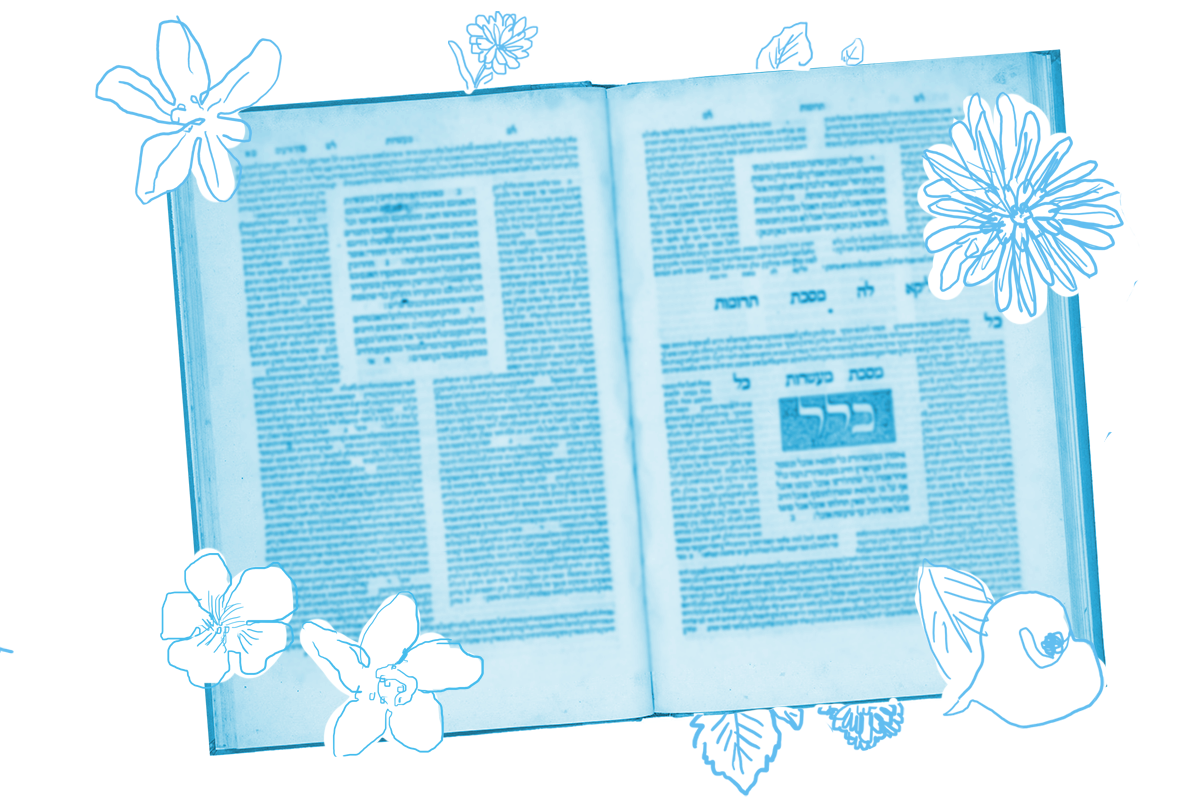On a recent flight, I rewatched a favorite movie of my teenage years: Dead Poets Society. All these years later, my eyes welled up just as they did at age 14 or so, as each of the Welton students ascended their desk to honor their beloved teacher, proclaiming Walt Whitman’s: “O Captain, my Captain.” The emotional conclusion of the film, it is a moment of reverence, respect, love and awe — key ingredients, our tradition suggests, for the student-teacher relationship.
Today we are continuing our exploration of the incense offering made on Yom Kippur. The mishnah we encountered on the second side of yesterday’s page explained how the high priest would enter the Holy of Holies, first walking between the two curtains that separate the sacred chamber from the rest of the Temple and then entering at the north end. He would place the coal pan he carried down between the staves of the ark and then place the incense on top of the coals so that it would start to fill the chamber with sweet smoke. (In the time of the Second Temple, there was no longer an ark and he placed the coal pan on the foundation stone.) Once the chamber filled with smoke, he would leave in the following manner, as per the mishnah:
The high priest exits and comes out the way that he entered.
The Gemara understands this to mean not just that the high priest retraces his steps, back to the gap at the north end of the inner curtain and then through the channel between the curtains until he exits at the southern end of the outer curtain, but that he actually kept his body facing the same direction it did when he entered. He backed out of the Holy of Holies so as not to turn his back on God. O Captain, my Captain, indeed.
With your help, My Jewish Learning can provide endless opportunities for learning, connection and discovery.
It is perhaps not so unexpected that the rabbis understood the high priest was forbidden from turning his back on God’s presence, from turning away from the King of Kings, the Captain of Captains. Nor perhaps that they then extend this practice to the priests in their service, the Levites on their platforms and the Israelites on their watches — each would not, in the Talmud’s language, “turn their faces and walk,” but rather “turn their faces sideways and walk,” so as not to turn their backs on the sacred places. But perhaps more surprisingly, the Gemara also teaches:
A student who takes leave of his teacher should not turn his face and walk but turn his face sideways and walk. This is in accordance with that practice of Rabbi Elazar when he took leave of his teacher, Rabbi Yohanan. When Rabbi Yohanan wanted to leave him, Rabbi Elazar would bend down and stand in his place until Rabbi Yohanan disappeared from his sight (and only then would Rabbi Elazar turn to leave).
The reverence and love extended to God in the Temple is mirrored in the way that sages do not turn their backs on their teachers when exiting a room. You do not turn your back on God’s presence — you extend your time with God until the last possible moment, and you keep your attention in the right place. And, in a more radical vein, if we do the same to honor our teachers — if we show them reverence, respect, awe and love — we honor the Divine. Only then can each of us stand, ready and open, before the Holy of Holies.
Read all of Yoma 53 on Sefaria.
This piece originally appeared in a My Jewish Learning Daf Yomi email newsletter sent on June 3rd, 2021. If you are interested in receiving the newsletter, sign up here.



